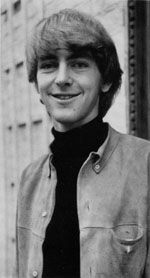
"Yesterday" is a song by the English rock band the Beatles, written by Paul McCartney and credited to Lennon–McCartney. It was first released on the album Help! in August 1965, except in the United States, where it was issued as a single in September. The song reached number one on the US charts. It subsequently appeared on the UK EP Yesterday in March 1966 and made its US album debut on Yesterday and Today, in June 1966.

"A Day in the Life" is a song by the English rock band the Beatles that was released as the final track of their 1967 album Sgt. Pepper's Lonely Hearts Club Band. Credited to Lennon–McCartney, the opening and closing sections of the song were mainly written by John Lennon, with Paul McCartney primarily contributing the song's middle section. All four Beatles played a role in shaping the final arrangement of the song.
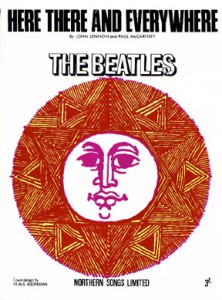
"Here, There and Everywhere" is a song by the English rock band the Beatles from their 1966 album Revolver. A love ballad, it was written by Paul McCartney and credited to Lennon–McCartney. McCartney includes it among his personal favourites of the songs he has written. In 2000, Mojo ranked it 4th in the magazine's list of the greatest songs of all time.
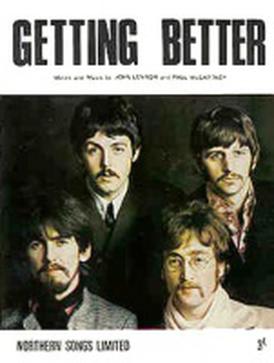
"Getting Better" is a song by the English rock band the Beatles from their 1967 album Sgt. Pepper's Lonely Hearts Club Band. It was written mainly by Paul McCartney, with some of the lyrics written by John Lennon, and credited to the Lennon–McCartney partnership.

Garech Domnagh Browne was an Irish art collector and a notable patron of Irish arts, traditional Irish music in particular. He was often known by a Gaelic translation of his English name, Garech de Brún, or alternatively Garech a Brún, especially in Ireland.
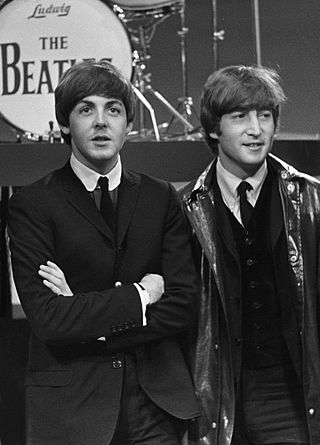
Lennon–McCartney was the songwriting partnership between English musicians John Lennon (1940–1980) and Paul McCartney of the Beatles. It is widely considered one of the greatest, best known and most successful musical collaborations ever by records sold, with the Beatles selling over 600 million records worldwide as of 2004. Between 5 October 1962 and 8 May 1970, the partnership published approximately 180 jointly credited songs, of which the vast majority were recorded by the Beatles, forming the bulk of their catalogue.

"Drive My Car" is a song by the English rock band the Beatles, written primarily by Paul McCartney, with lyrical contributions from John Lennon. It was first released on the band's 1965 album Rubber Soul as the opening track. The song later appeared in North America on the Yesterday and Today collection, again to open the record, as the track had been dropped from the American version of Rubber Soul.
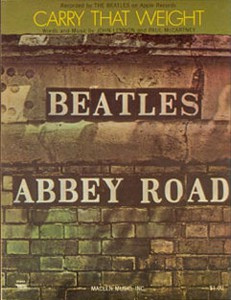
"Carry That Weight" is a song by the English rock band the Beatles from their 1969 album Abbey Road. Written by Paul McCartney and credited to Lennon–McCartney, it is the seventh and penultimate song in the album's climactic side-two medley. It features unison vocals in the chorus from all four Beatles, a rarity in their songs. It is preceded by "Golden Slumbers" and segues into "The End".

"Rocky Raccoon" is a song by the English rock band the Beatles from their 1968 double album The Beatles. It was primarily written by Paul McCartney, although credited to the Lennon–McCartney partnership. McCartney began writing the song in Rishikesh, India, where the Beatles were studying Transcendental Meditation in the early months of 1968. John Lennon and Scottish singer-songwriter Donovan, who joined the Beatles on their retreat, also made contributions to the song. A cover version by Richie Havens reached number 76 in Canada in 1969.

"Why Don't We Do It in the Road?" is a song by the English rock band the Beatles, released on their 1968 double album The Beatles. Short and simple, it was written and sung by Paul McCartney, but credited to Lennon–McCartney. At 1:42, "Why Don't We Do It in the Road?" comprises 34 bars of a twelve-bar blues idiom. It begins with three different percussion elements and features McCartney's increasingly raucous vocal repeating a simple lyric with only two different lines.
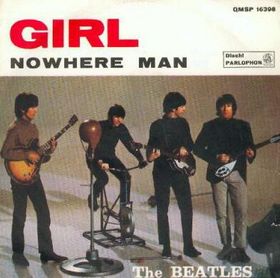
"Girl" is a song by the English rock band the Beatles from their 1965 album Rubber Soul. It was written by John Lennon and credited to Lennon–McCartney. "Girl" was the last complete song recorded for that album. "Girl" is considered to be one of the most melancholic and complex of the Beatles' earlier love songs.
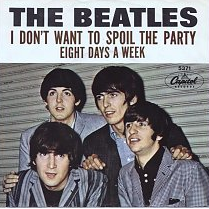
"I Don't Want to Spoil the Party" is a song by the English rock band the Beatles, written by John Lennon and credited to Lennon–McCartney. It was featured as the twelfth track on the 1964 album Beatles for Sale. "I Don't Want to Spoil the Party" was also released on the Beatles for Sale EP. It was later released as the B-side of the US single "Eight Days a Week", and then as the fifth track on the North America-only album Beatles VI. The song reached number 39 on the Billboard Hot 100.

"If I Fell" is a song by English rock band the Beatles which first appeared in 1964 on the album A Hard Day's Night in the United Kingdom and United States, and on the North American album Something New. It was written primarily by John Lennon and credited to Lennon–McCartney. "That's my first attempt at a ballad proper. ... It shows that I wrote sentimental love ballads way back when", Lennon stated in his 1980 Playboy interview. Paul McCartney stated that he contributed to the song: "We wrote 'If I Fell' together."

"Any Time at All" is a song by the English rock band the Beatles. Credited to the Lennon–McCartney partnership, it was mainly composed by John Lennon, with an instrumental middle eight by Paul McCartney. It first appeared on the Beatles' A Hard Day's Night album.

Lee Eastman was an American show business lawyer and art collector from New York City.

Dominick Geoffrey Edward Browne, 4th Baron Oranmore and Browne, 2nd Baron Mereworth, was a British peer and legislator.

Luggala, also called Fancy Mountain at 595 metres (1,952 ft), is the 230th-highest peak in Ireland on the Arderin scale. Being below 600 metres (2,000 ft), it does not rank on the Vandeleur-Lynam or Hewitt scales. Luggala is in the northeastern section of the Wicklow Mountains in Ireland, and overlooks the Lough Tay, which lies at the base of the steep granite cliffs on Luggala's eastern face. As well as a noted scenic point in County Wicklow, Luggala's eastern cliffs have many graded rock-climbing routes.
"I'm in Love" is a song credited to Lennon–McCartney and possibly written by John Lennon. In 1963 the English Merseybeat band the Fourmost made a recording of the song at the EMI Studios, produced by George Martin.
Melanie Susan Potier, better known as Suki Potier, was an English model.

Oonagh Guinness was an Anglo-Irish socialite, society hostess and art collector, and the second wife of Dominick Browne, 4th Baron Oranmore and Browne.
